Onboarding at ITCOMMS: Creating the Best Conditions for the Best People
- Alina Morozova
- Jan 23
- 4 min read
Introduction: Why Onboarding Matters
Onboarding is more than just familiarizing new hires with rules and paperwork—it’s a thoughtful process that ensures employees can showcase their strengths and integrate into the workflow comfortably and efficiently.
At ITCOMMS, we see onboarding as a cornerstone of employee engagement and success. That’s why we’ve designed our onboarding process as a comprehensive journey filled with training, mentorship, and structured feedback.
What is Onboarding at ITCOMMS?
Our onboarding process began as part of a larger initiative to build a scalable and structured business. This included implementing corporate principles, sales management tools, and streamlined HR processes.
The onboarding project was conceptualized and developed by Katya Alexandrova, our operations manager, who we fondly refer to as the creator of “Orderliness.”
Like any process, onboarding evolves to meet the needs of the business and the team. Over time, and with each new hire, our onboarding program has grown into the robust structure it is today,” - Katya explains.
Our onboarding process is built on key pillars:
Introducing new hires to the team and company culture
Training them on business processes and tools
Setting clear goals for the probation period
Providing ongoing mentorship and feedback
How It Works in Practice
Administrative Formalities
The first step is straightforward: collecting documents, signing contracts, and completing NDA agreements. The process is fully automated and comes with clear instructions to make it as smooth as possible.
A Warm Welcome
On their first day, every new hire receives a Welcome Letter outlining a checklist and their adaptation plan. They also meet with their mentor, who provides guidance throughout onboarding.
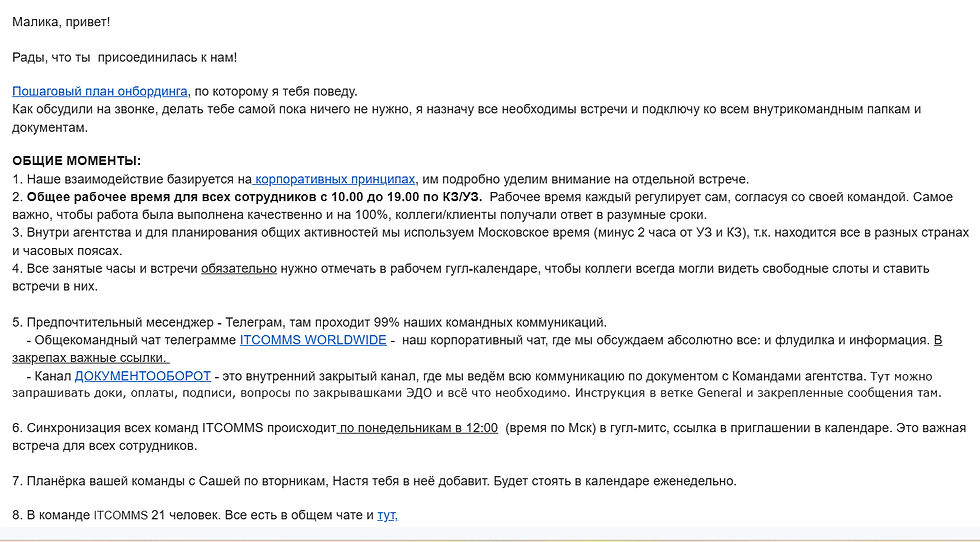
Employees often highlight this as a standout feature of ITCOMMS. For example, PR manager Zhiger Shudanbekov recalls:
In my first days at ITCOMMS, I was impressed by the extensive internal knowledge base—structured guides, screenshots, and even video tutorials. The onboarding process was smooth and well-thought-out, with a personalized welcome from the CEO. It made a big difference!”

Learning the Culture and Processes
New employees gain access to company documents outlining ITCOMMS’s mission, principles, and strategic goals. These foundational documents provide insight into what drives the team and shape decision-making processes.

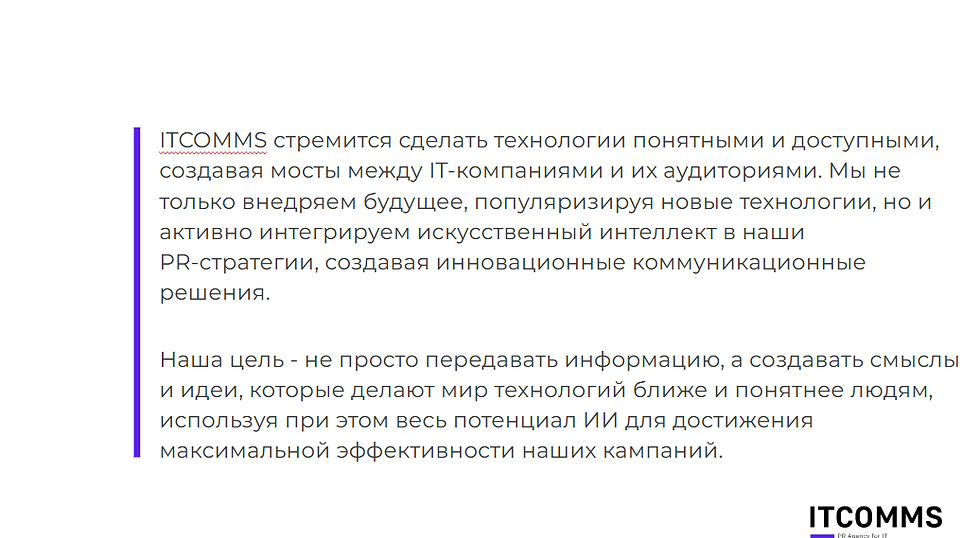

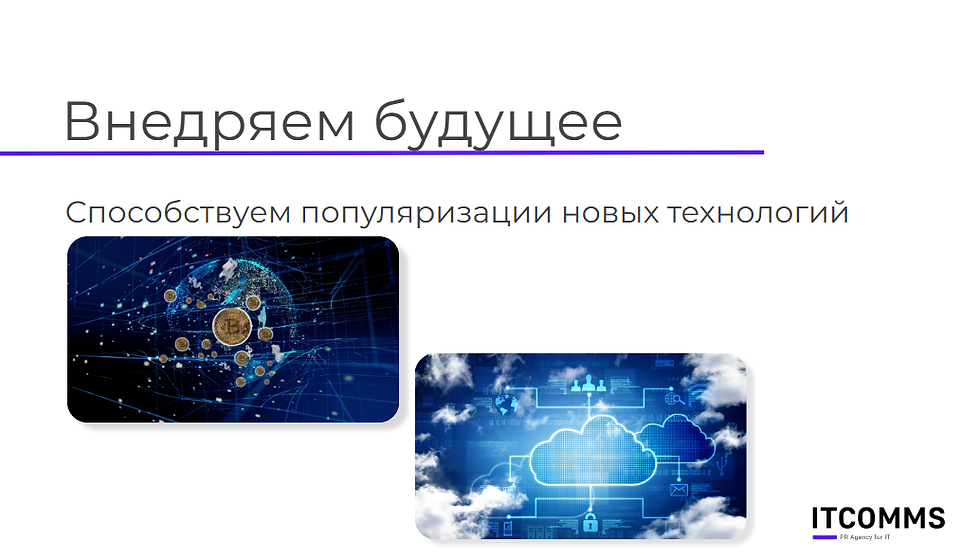

We keep these documents updated to maintain trust and motivation. For instance, in 2024, we added a commitment to “Educating the Next Generation” to our corporate values, reflecting our investment in the industry’s future.
Corporate rules are not just theoretical—they govern all tasks and communications, both internal and external. Mistakes are met with collaborative discussions to identify areas for improvement and adjust the rules if necessary.

2. Training and Immersion in Projects
Every new hire receives a personalized probation period plan, which includes clear objectives for their first two months. For example, PR Account Executives may need to independently manage client projects, launch publications in target media, and master key metrics and digital tools.
Aziza Ilyasova, another PR manager, says:
“The probation plan provided clear direction and motivation. It didn’t feel like pressure—it gave me a sense of purpose and progress!”
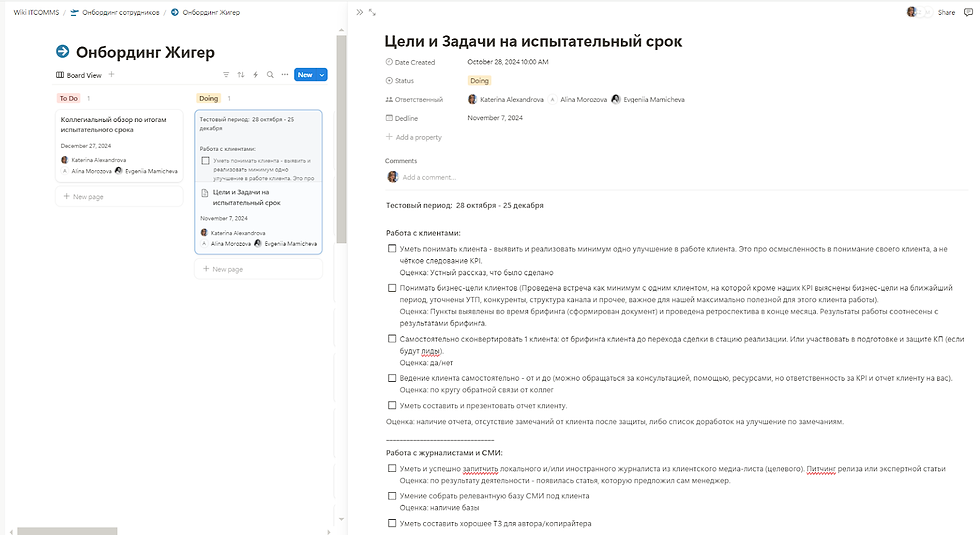
3. Mentorship and Feedback
The onboarding process ends with a collaborative review session, where mentors and colleagues share feedback on the new hire’s performance during the probation period. This feedback helps employees set personal development goals for the next six months.
Our experienced specialists are always ready to help. For example, Katya Alexandrova, responsible for onboarding, personally accompanies employees throughout the onboarding process and explains the most complicated aspects of the work.
Training includes:
Workshops on client metrics and reporting
Practicums on creating proposals and budgets
Tutorials on CRM tools
Transparency sessions to explain the company’s financials and results
Screens from training sessions on performance metrics and estimates. Katya's smiling face can make even these monstrous topics easily digestible and understandable.

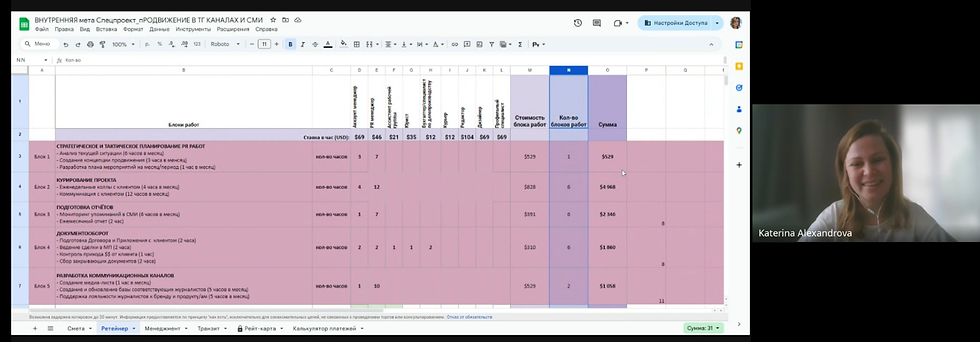

What Makes ITCOMMS Onboarding Unique?
Comfort and Support
We foster an environment where employees feel free to ask questions. Support and trust are at the heart of our principles, ensuring everyone feels like part of the team from day one.
“Onboarding with Katya was incredibly comfortable and informative. I knew exactly who to approach and where to find the information I needed. I made only one mistake during the entire process, which says a lot about how well-structured it was!”— Aziza Ilyasova, PR manager, reflects
Focus on Growth
We aim not just to meet expectations but to encourage professional development. Setting challenging yet achievable goals motivates our employees to grow.
Structure and Tools
Our internal knowledge base, templates, guides, and video tutorials make adaptation seamless, while regular mentorship meetings help track progress and refine plans.
Results and Employee Feedback
Our onboarding process delivers measurable results. Within the first months, new employees hit key performance indicators, build client relationships, and launch successful campaigns.
For example, PR manager Gainel Hayat-Shakirova wanted to deepen her understanding of finance and taxation. We tailored her onboarding process to align with her individual goals..
Creating the Best Conditions for the Best People
At ITCOMMS, we believe people are our most valuable asset. Our goal is to not only hire talented professionals but to create an environment where they can thrive and unlock their full potential.
A well-structured onboarding process helps us retain top talent and foster growth. We’re proud of our approach and hope it sets a standard for the industry.
If you’re looking for a workplace that values your talents, supports your growth, and welcomes you from day one, ITCOMMS is the place to be. 🚀
*This article has been translated from Russian to English by an AI language model. While efforts have been made to ensure accuracy, there may be nuances or idioms that do not perfectly translate. The original Russian article should be referenced for the most precise content.